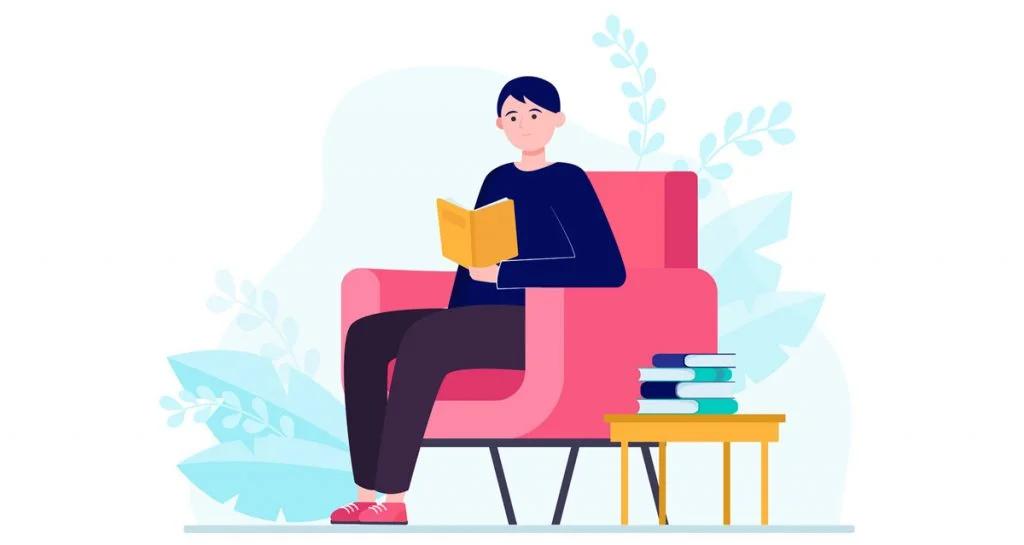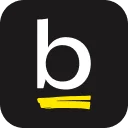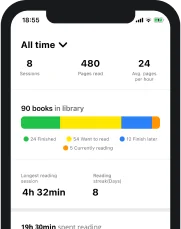Reading, especially when done with a clear purpose of learning, requires a variety of strategies for a maximized effect on comprehension and information retention. To achieve your maximum potential, there are several strategies you absolutely need to master.
Here at Basmo, we are fully dedicated to helping you reach your maximum potential, regardless of what that actually means to you. Understanding the importance of scanning and skimming in reading, for example, can have a huge impact on your reading experience and the efficiency of your reading sessions.
We are here to help you learn the difference between skimming and scanning and how to properly use these techniques to improve the results in terms of comprehension and information retention of each of your reading sessions.
What is scanning and skimming in reading?
Scanning and skimming are reading techniques that involve rapidly passing through a text with quick eye movements and keen attention to keywords and other relevant information. While the two techniques are certainly different, their goals are quite similar and they are both part of the early stages of analytical reading.
Scanning is defined as the process of rapidly looking through a certain text with a clear purpose to identify particular keywords or passages you know you will need to extract important information from.
Skimming, on the other hand, is done without a clear intent to find particular information. While the same reading speed and the same relatively superficial approach are required, skimming is used for gaining a vague idea of the main concepts within a book and for earning a certain level of overview of its content.
As you can see, the scanning and skimming meaning is quite a simple concept to grasp. Putting the concepts into practice can be a different story though, especially without a clear set of guidelines. Rest assured, we’ve got you covered.
How to do scanning and skimming?
Learning the skimming and scanning techniques is a very important part of becoming a proficient reader. They are part of the four levels of reading and they play a relevant role in comprehension and retention improvement. Since the two techniques do share some similarities, but are different in many aspects, let’s have a look at the correct process of doing each one separately.
How to properly skim when reading
To recap, skimming is done to gain a vague understanding of a text and to quickly explore the content of reading material before diving deeper into reading it. Here is how you should skim a book for the best results:
- Check the title, table of contents, and the name of the chapters to understand how the content is structured and where certain ideas and concepts are being explained.
- Look at the headings in each chapter to better understand how the information is structured and where you can actually find all the relevant data.
- Read the first paragraph and the first and last sentences of the next couple of paragraphs.
- While leafing through the content, stop to read the bolded or italicized text.
- Only when a particular piece of information pops up while leafing through the book, stop and read the entire sentence containing particular keywords.
- If available, read individual chapter summaries.
How to use scanning while reading
When it comes to scanning, things get a little more interesting and challenging. With scanning, the procedure differs depending on the final goal of the process. There are generally two different scanning techniques: scanning for research/study, and scanning to find the answers to particular questions. Let’s have a look at both, separately.
Scanning for research/study
- Since you need to do some scanning, it is implied that you already know what you should be looking for. That being said, you should first decide on a couple of keywords or phrases to search for within the text.
- Try to look after each keyword separately in order to not get overwhelmed. If your goal is to identify more than one keyword, you should scan the reading material separately for each keyword.
- Use your eyes to quickly scan the content and look for the desired keyword.
- Whenever you encounter one of the words or phrases you are looking for, you should carefully read the sentences or paragraphs surrounding them.
Scanning to answer questions
- Figure out the questions you want to find answers for
- Read the questions and identify the most relevant keywords you should be looking for in order to find the answers
- Only try to answer one question at a time. If you want answers to multiple questions, you should scan the reading material separately for each question.
- When you find a keyword that indicates the answer to your question could be nearby, read the surrounding content carefully
- Read the question again and try to figure out whether the content you just went through actually answers that particular question correctly and accurately.
Skimming and scanning with Basmo
Since skimming and scanning are generally just the precursors of a more intense and demanding analytical reading session, it’s safe to assume that you can benefit from all the help you can get. Reading tracking apps can do quite a lot in improving not only your reading experience but also the results you manage to achieve through each session. Here are a couple of ways in which Basmo can be a remarkably useful tool in active reading sessions when skimming and scanning.
Basmo tracks your reading speed and the duration of your sessions. Both skimming and scanning are defined by an increased reading speed, but monitoring that is sometimes difficult. With Basmo, you can rest assured that you will always have access to relevant data and metrics regarding your reading performance. This includes your speed and the duration of each reading session, which will help you gain a much better understanding of your performance and efficiency.
With Basmo, you can easily take notes as you read. Both skimming and scanning require you to pay close attention and extract the relevant information from a particular reading material. Jotting down your thoughts while going through this process can make the difference between good and bad comprehension or retention. With Basmo, you can easily write notes while reading, directly within the app. As soon as a reading session is started, the note-taking feature becomes active and you can simply start writing down whatever you feel is important.
Basmo helps you keep your reading lists in check. While some books require more attention on your part or a more analytical approach in terms of reading, others are just meant to help you relax after a tough day. To make things easier, Basmo allows you to create and personalize as many reading lists as you please. That way, you can keep your entertaining books separate from the ones that require you to engage in active or analytical reading.
What is the difference between skimming and scanning?
Deciding whether you should skim vs scan certain reading materials involves having a good understanding of the way the two differ. Even though at first glance they might seem similar enough, the truth is that the differences are notable and can make quite an impact on your reading performance if misunderstood.
There are four main aspects where skimming and scanning actually differ from one another.
1. Meaning
In terms of meaning, skimming vs scanning differ significantly. Skimming implies reading something quickly with the purpose of gaining a vague understanding of the text and preparing for a more intense active reading session or deciding whether a book should be read in its entirety or not.
Scanning, on the other hand, implies a more selective process through which your goal is to actually identify a particular piece of information.
2. Reading method
The reading method also makes a clear differentiation between skimming and scanning. Skimming is a process that is mainly defined by speed and involves reading or going through as much content as possible in the shortest amount of time. The scanning process is selective. While speed is also important, the more relevant aspect of scanning is actually finding the required information within the text.
3. Objective
The objective is also a factor that differentiates skimming and scanning. The purpose of a skimming session is to gain a vague understanding of the content, find out what the text is about, how it is structured, and familiarize yourself with the main ideas. Whether you do the skimming as an introduction for an active reading session or to figure out if you should be reading a particular book implies no changes to the process.
In scanning, the objective is to gather particular pieces of information from the text. In other words, while skimming is used for gaining an overview or a birds-eye view of the content, scanning is focused on details.
4. Familiarity
How familiar you are with a particular reading material also determines whether you should be skimming or scanning it. Skimming is generally done with brand-new reading material, to gain a vague understanding of it.
Scanning is, on the other hand, done with texts or books you are already familiar with. You know what the book is about and you know that a particular piece of information lies within. The process of scanning is actually finding that particular information for further use.
What are the similarities of skimming and scanning?
Despite the differences that separate them, skimming and scanning also share some similarities. They are both defined by speed to a certain extent. They both involve a more superficial type of reading that implies not reading entire texts but rather the important passages.
Skimming and scanning are both very useful and effective reading strategies as long as they are used correctly and for the right purposes.
Both allow you to absorb information quickly, even though the actual information comes in two different forms in the two processes (overview in skimming, and detailed data in scanning).
Final thoughts
While the key difference between skimming and scanning is the ultimate goal of each reading technique, there is no denying the fact that they can both come in handy once in a while in their own way. Use Basmo to take full advantage of scanning and skimming in reading.
Give Your Reading Experience
An Extra Boost With Basmo
Track the books you read, monitor the time you spend reading and keep notes on your reading habits and how it makes you feel. You can set yourself targets for the time you spend reading and you can get notified whenever you’re behind on your reading time.
Image by storyset on Freepik







